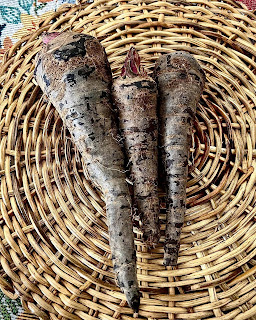Gima Saag / Dime Saag (Indian Chickweed / Bitter Cumin grows wild mostly near small water bodies like lakes, ponds, streams etc.. and also grows wild on land.. it grows round the year, but grows more during monsoon. Many of us must have seen this weed growing in our pots and garden, but generally we pluck them out. Next time grow them and enjoy as a side dish. It belongs to carpet weed family. It has medical properties and is bitter in taste. It has healing properties to cure constipation, indigestion, skin problems etc. It’s used as vegetable in rural Bengal. The leaves are used for cooking. Mostly it’s not very popular in urban cities.. sometimes sold by villagers in the market but commonly consumed in the rural areas where there are open lands and water bodies.
Today I made Flitters / Bora with Gima Saag
Ingredients
1/2 bowl of Gima saag leaves
3 Garlic cloves chopped
2 Green Chillies chopped
4 tbsp Besan / Chickpeas flour
2 to 3 tbsp Rice flour
Salt to taste
1/2 tsp Turmeric powder
Oil to fry
Method
Take only the leaves of the Gima Saag, wash it well, add salt, turmeric powder, chopped green chillies and garlic, rice flour and chickpea flour into the bowl, add very little water if required, mix all the ingredients together until all the ingredients binds together into a very soft sticky dough.. Heat oil in a pan, take small portions of the dough, flatten it and place the portions in the hot oil, fry the flitters until golden brown in colour from both the sides. Enjoy it hot with steamed rice.






